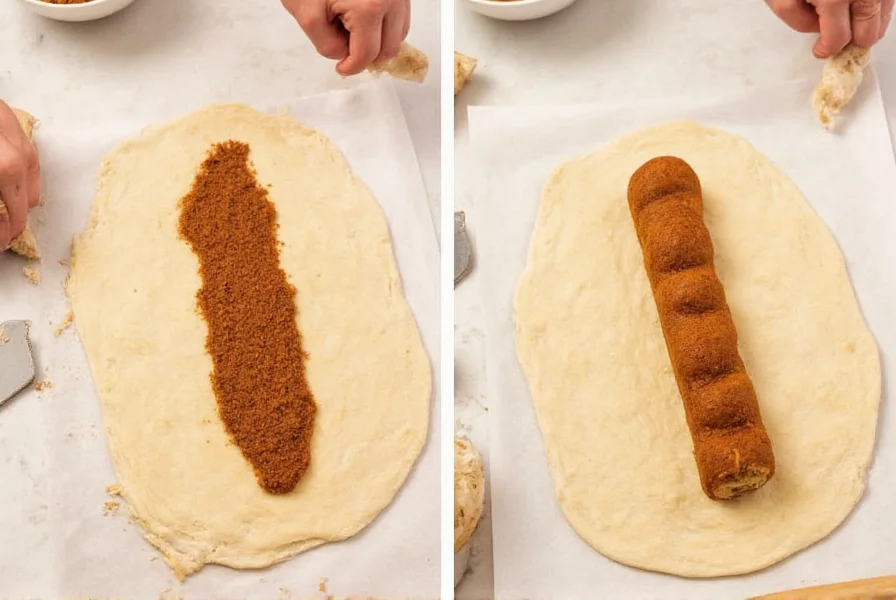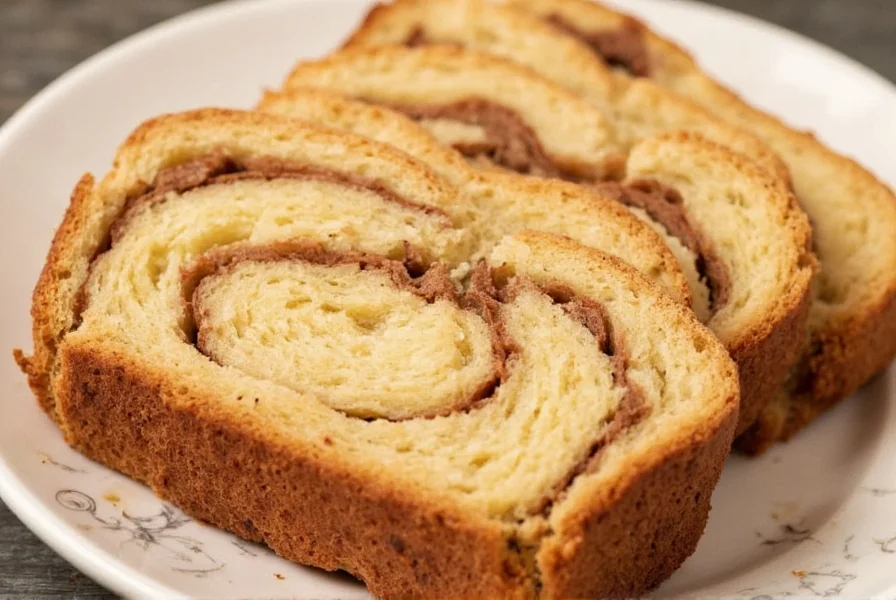There's something magical about pulling a warm loaf of cinnamon swirl bread from the oven. The sweet aroma fills your kitchen, promising soft, tender slices perfect for breakfast or an afternoon treat. Many home bakers avoid attempting cinnamon bread because they fear complicated techniques or disappointing results. This easy cinnamon swirl bread recipe eliminates those worries with a straightforward approach anyone can master.
Why This Easy Cinnamon Swirl Bread Recipe Works
Unlike traditional recipes that require precise temperature control or specialized equipment, this version focuses on simplicity without sacrificing quality. The dough uses the 'no-knead fold' method, which develops gluten through gentle folding rather than vigorous kneading. The cinnamon filling incorporates a small amount of flour to absorb moisture, preventing the common problem of soggy centers or leaking filling during baking.

Ingredients for Simple Cinnamon Swirl Bread
Dough:
- 3 1/2 cups (440g) all-purpose flour
- 1/4 cup (50g) granulated sugar
- 2 1/4 teaspoons active dry yeast (one packet)
- 1/2 cup (120ml) warm milk (110°F/43°C)
- 1/4 cup (60g) unsalted butter, melted
- 1 large egg, room temperature
- 1 teaspoon salt
Cinnamon Filling:
- 1/2 cup (100g) packed brown sugar
- 2 tablespoons ground cinnamon
- 2 tablespoons all-purpose flour
- 3 tablespoons unsalted butter, softened
| Ingredient | Why It Matters | Beginner Tip |
|---|---|---|
| Warm milk | Activates yeast without killing it | Test with your wrist - should feel warm but not hot |
| All-purpose flour in filling | Absorbs moisture to prevent leakage | Don't skip this - it's the secret to clean slices |
| Room temperature egg | Helps ingredients emulsify properly | Place in warm water for 5 minutes if cold |
Step-by-Step Instructions for Foolproof Cinnamon Swirl Bread
Preparing the Dough
- In a large mixing bowl, combine warm milk and 1 teaspoon of the granulated sugar. Sprinkle yeast over the top and let sit for 5-7 minutes until foamy.
- Add melted butter, egg, remaining sugar, and salt to the yeast mixture. Whisk until combined.
- Gradually add flour, 1 cup at a time, stirring until a shaggy dough forms.
- Cover bowl with plastic wrap and let rest for 20 minutes. This allows the flour to fully hydrate.
- After resting, use wet hands to gently fold the dough over itself 4-5 times. Cover and let rise at room temperature for 1 hour, or until doubled in size.
Creating the Cinnamon Swirl
- While dough rises, prepare filling by mixing brown sugar, cinnamon, and flour in a small bowl.
- Once dough has risen, gently punch it down and turn onto a lightly floured surface.
- Roll dough into a 16x12 inch rectangle, being careful not to tear the dough.
- Spread softened butter evenly over the dough, then sprinkle cinnamon mixture, leaving a 1/2 inch border around the edges.
- Starting from the long side, tightly roll the dough into a log. Pinch the seam to seal.
- Place the log seam-side down in a greased 9x5 inch loaf pan. Tuck the ends under slightly.
- Cover loosely with plastic wrap and let rise for 30-45 minutes until the dough crowns about 1 inch above the pan rim.

Baking and Storage Tips
Preheat your oven to 350°F (175°C) while the dough does its final rise. Bake for 35-40 minutes, until the internal temperature reaches 190°F (88°C) and the top is golden brown. If the top browns too quickly, tent with aluminum foil during the last 10 minutes of baking.
Let the bread cool in the pan for 10 minutes, then transfer to a wire rack to cool completely before slicing. This cooling period allows the crumb structure to set, preventing gummy slices. For clean cuts, use a serrated knife with a gentle sawing motion.
Store cooled bread in an airtight container at room temperature for up to 4 days. For longer storage, wrap tightly in plastic wrap and freeze for up to 3 months. Thaw at room temperature before serving.
Common Problems and Solutions
Problem: Cinnamon filling leaks out during baking
Solution: Ensure you've included the 2 tablespoons of flour in the filling mixture. Also, don't overfill the loaf pan during the final rise - the dough should crown about 1 inch above the rim.
Problem: Dense or heavy texture
Solution: Check your yeast expiration date and verify milk temperature wasn't too hot when activating yeast. Also, avoid adding too much extra flour during kneading - the dough should be slightly sticky but manageable.
Problem: Swirls aren't visible in slices
Solution: When rolling the dough, make sure to roll it tightly and seal the seam well. Also, allow the bread to cool completely before slicing for clean swirl definition.
Delicious Variations to Try
Once you've mastered this easy homemade cinnamon swirl bread, experiment with these simple variations:
- Nutty version: Add 1/2 cup chopped pecans or walnuts to the filling
- Fruity twist: Sprinkle 1/4 cup raisins or dried cranberries over the filling before rolling
- Gluten-free option: Substitute with a 1:1 gluten-free flour blend (add 1 teaspoon xanthan gum)
- Vegan adaptation: Replace butter with coconut oil, milk with almond milk, and egg with flax egg
Frequently Asked Questions
Can I make this easy cinnamon swirl bread recipe without a stand mixer?
Yes, this recipe is specifically designed to be made by hand. The no-knead fold method develops gluten through gentle folding rather than vigorous kneading, making it perfect for mixing in a bowl with a wooden spoon and your hands.
Why does my cinnamon swirl bread collapse after baking?
Collapse usually happens when the bread is underbaked or removed from the oven too soon. Always check internal temperature (190°F/88°C) before removing from oven. Also, ensure your yeast is fresh and active, as weak yeast can cause structural issues.
How can I prevent the cinnamon filling from leaking out?
The key is adding 2 tablespoons of flour to your cinnamon-sugar mixture, which absorbs moisture. Also, leave a 1/2 inch border around the edges when spreading the filling, and don't overfill your loaf pan during the final rise - the dough should crown about 1 inch above the rim.
Can I prepare this cinnamon bread recipe the night before?
Yes! After shaping the loaf and placing it in the pan, cover tightly and refrigerate overnight. The next morning, remove from refrigerator 1 hour before baking to allow it to come to room temperature and complete its rise.
What's the best way to slice cinnamon swirl bread for clean layers?
Always let the bread cool completely (at least 2 hours) before slicing. Use a sharp serrated knife and a gentle sawing motion. For picture-perfect slices, dip your knife in hot water and wipe dry between cuts.











 浙公网安备
33010002000092号
浙公网安备
33010002000092号 浙B2-20120091-4
浙B2-20120091-4